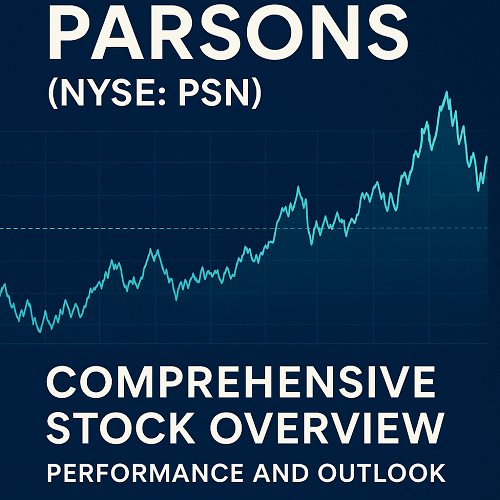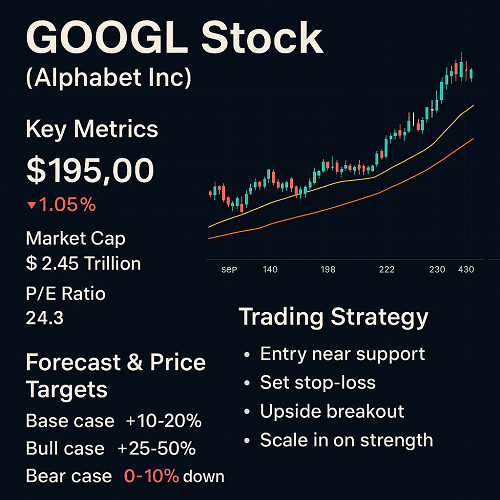Skyworks Solutions, Inc. is a U.S.-based semiconductor company that designs and develops analog and mixed-signal semiconductors, focused heavily on RF (radio-frequency) modules, front-end modules (FEMs), amplifiers, diodes, power-management devices, and related subsystems across wireless communications, infrastructure, automotive, IoT, and industrial applications. For investors looking at the swks stock, understanding these applications is crucial.
Key Highlights
- Headquarters: Irvine, California (and other design/manufacturing sites)
- Ticker: SWKS, listed on NASDAQ.
- Sector/Industry: Technology → Semiconductors (analog & mixed-signal)
- One of the major suppliers for smartphone OEMs (notably historically to Apple Inc.), and active in automotive, infrastructure and IoT segments.
Strategic Positioning
The company’s core strength lies in its RF front-end and analog/mixed-signal expertise, which are becoming more critical as smartphone devices incorporate more advanced 5G/6G RF content, as well as as the “edge” sectors such as automotive connectivity, IoT, industrial smart devices, and broadband infrastructure. Studies suggest this will underpin rising average selling price (ASP) per device and increased content count.
However, Skyworks faces some material strategic headwinds:
- Heavy reliance on a small number of major customers, leading to significant customer-concentration risk. For example, Apple reportedly accounts for ~70% of revenue historically.
- Industry cyclicality: semiconductor demand is subject to major fluctuations tied to smartphone cycles, consumer electronics, and macroeconomic/trade headwinds.
- Competitive pressure from other chip vendors, consolidation across the RF and mixed-signal domain, and supply-chain/geo-political issues.
Because of this mix of tailwinds and risks, the outlook for SWKS merits a nuanced trading/investment approach—one where timing, technical triggers, and fundamental catalysts matter.
Fundamental Analysis
Recent Financial Performance
- One source reports Q2 (Mar 28, 2025) revenue of $953.2 M, down ~10.8% year-on-year; EPS for the same period was $0.43, down ~57%.
- Another report indicates mixed fundamentals: e.g., trailing ROE of ~6.9% vs industry average ~11%.
- Fundamental statistics over five years: ROIC ~16.6%, ROA ~14.3%, ROE ~20.3%.
These figures show that while historically the company delivered strong returns on capital, more recently profitability has weakened and growth has stagnated.
Valuation & Analyst Targets
- The consensus analyst 12-month price target is around $83.18, implying ~20% upside from certain current levels.
- Another summary gives an average target of ~$92 (with low ~$73 and high ~$140).
- From a value-strategy perspective, one rating system gave the stock a “pass” on multiple metrics and deemed it a 90% score by its model (though note the rating includes qualitative factors).
Strengths & Risks Summary
Strengths:
- Leading RF/analog/mixed-signal technology, broadening content per device trend.
- Potential upside from automotive + IoT + infrastructure diversification beyond smartphones.
- Historically strong capital efficiency (ROIC/ROA) and cash-flow generation.
Risks:
- Customer concentration (e.g., Apple) means a shift in customer sourcing or product mix could materially impact revenues.
- Weak recent profitability metrics and margin pressure, indicating growth may be challenged.
- Technical and sector headwinds: reports of weak technical indicators and bearish flows.
- Macro & supply-chain risks: semiconductors are impacted by geopolitical trade, inventory cycles, demand softness.
Investment-Thesis Scenarios
From an investment/trading standpoint, we can define three plausible scenarios:
- Bull case: Diversification beyond smartphones succeeds, content per device (5G/6G/automotive) ramps; valuation re-rates, price moves toward high ~$90+ or even beyond.
- Base case: Slow steady recovery, modest growth, valuation stays in “hold” range at $75-$85.
- Bear case: Smartphone content declines, margin pressure persists, rating downgrades follow; price falls toward $60 or lower (support zones evident).
Technical Analysis & Trading Setup
For advanced traders, the technical outlook on SWKS offers both caution and opportunity.
Current Technical Profile
- One technical report flags a “weak technical profile” and advises caution: negative money flows, bearish chart signals.
- Another snapshot indicates a strongly bullish internal technical score (7.04/10) but acknowledges mixed fundamentals and sentiment.
- Most recent outlook indicates very low technical diagnostics (score ~1.88/10), suggesting near-term technical weakness.
These conflicting views reflect the stock being at a technical crossroads—some cycles pointing up, others pointing down.
Key Price Levels & Indicators
- Support levels: ~$73.68, ~$72.03, ~$71.05 are cited in one technical overview.
- Resistance levels: ~$76.31, ~$77.29, ~$78.94 likewise noted.
- Beware classic reversal patterns: “Hanging Man”, “MACD death cross”, etc have been flagged as bearish indicators.
- Also, oversold/overbought indicators (Williams %R, RSI) are giving mixed signals.
Trading Strategy Framework
Given the setting, here is a suggested trading framework for SWKS:
Entry strategy (for traders):
- Wait for a clear breakout above resistance (~$78-$80) with volume to confirm momentum.
- Alternatively, for risk‐aware traders: wait for pull-back into support zone (~$71-$73) with technical reversal signals (hammer, bullish engulfing, etc).
Stop-loss and risk controls:
- For long positions, place stop-loss just below key support (~$70) or ~5-7% below entry, depending on risk tolerance.
- For short or tactical bear trades, consider short entry on confirmed breakdown below ~$70 with stop above ~$74-$76.
Target zones:
- On bullish breakout: initial target ~$90-$95 (aligned with upper analyst target ~$92).
- On pull-back entry: target ~$80-$85 initially, adjust upward if positive earnings/catalyst emerges.
- Bear scenario: downside target ~$60-$65 if breakdown materializes (see news of Apple content decline).
Catalyst watchlist:
- Earnings reports & guidance (monitor next earnings date)
- Key customer announcements (e.g., Apple share of business)
- Industry cyclicality signals (smartphone shipments, 5G/6G rollout)
- Supply-chain/trade policy updates
Risk Management & Positioning
Given the dual nature of SWKS (potential upside but tangible risks), risk management is essential.
Portfolio Allocation
- For investors: treat SWKS as a selective growth/turnaround exposure, not a core stable holding. Limit to, say, ≤ 5 % of total portfolio unless conviction is very high.
- For traders: keep size manageable (e.g., ≤ 1-2 % of equity per trade), given volatility and technical ambiguity.
Time Horizon & Style Matching
- Short‐term traders: focus on technical triggers and volume signals; earnings and news catalysts matter most.
- Medium‐term investors (6-18 months): place emphasis on fundamental recovery, diversification beyond smartphones, margin improvement.
- Long‐term buy-and-hold: only if you believe Skyworks will successfully transition into automotive/IoT leadership and regain growth momentum.
Risk Factors to Monitor
- Major customer losses: If Apple or other large customers reduce content or switch suppliers, revenue hit could be significant.
- Industry downturns: Semiconductor cycles are highly sensitive; oversupply, weaker device demand could compress margins.
- Trade & supply chain disruptions: Tariffs, restrictions on export (e.g., China, Taiwan) can raise costs and delay manufacturing.
- Execution risk: Diversification strategy (automotive/IoT) may take longer, and margins may be lower than smartphone business.
- Technical failure: If price breaks down below support, negative momentum may accelerate.
Comparative & Competitive Landscape
Understanding SWKS also means understanding its peers and the environment.
Peer Comparison
Key peers include: Broadcom Inc. (AVGO), Qualcomm Incorporated (QCOM), Analog Devices, Inc. (ADI), and others in the RF/analog/mixed-signal space.
SWKS differentiates via its RF front-end specialization and long smartphone content history. Its valuation and performance risk profile differ somewhat (higher customer concentration, more cyclicality).
Industry Trends & Tailwinds
- 5G/6G rollout: More RF content per smartphone, as well as infrastructure and IoT devices.
- Automotive and EV connectivity: As vehicles incorporate more sophisticated communication chips, SWKS may benefit.
- IoT/edge computing: Growth in smart devices and wireless modules may drive future demand.
- Potential supply-chain shifts: Manufacture diversification (U.S./Asia) and geopolitics are influencing semiconductor supply.
Competitive & Structural Risks
- Intensifying competition: RF front-end is getting crowded and consolidated (mergers/acquisitions).
- Margin pressure: As smartphone ASPs flatten or decline, the content growth may slow.
- Customer sourcing shifts: OEMs may diversify suppliers to reduce risk, thus lowering SWKS content per device.
Earnings & Catalyst Calendar
Key upcoming dates and catalysts to watch include:
- Next quarterly earnings release (check investor relations page for SWKS).
- Guidance updates: especially regarding smartphone content share, automotive/IoT ramp.
- Industry device shipment updates: smartphone unit sales, global 5G upgrade pace.
- Trade policy announcements (U.S./China, Taiwan, etc).
- Major customer contract wins or losses (Apple, etc).
Summary & Trade/Investment Recommendation
Bottom line: SWKS is a nuanced opportunity. It offers compelling medium-to-long-term upside if its diversification strategy and RF content ramp deliver; yet it carries meaningful risk given smartphone content erosion, cyclicality, and mixed technical signals.
Recommendation (for advanced traders/investors):
- If you believe in the diversification story (automotive/IoT) and are comfortable with cyclicality, consider a selective buy within the $71-$75 support zone, with stop-loss below ~$70 and target ~$85-$90 over 6-12 months.
- If you prefer caution, wait for a confirmed breakout above ~$78-$80 on increased volume before entering.
- If you are bearish (consumer electronics cycle weakening, content loss accelerating), consider a short/hedge if breakdown below ~$70 occurs, targeting ~$60-$65.
Suggested Keywords & SEO Considerations
To rank well on Google, key topics and keywords this article addresses include:
- “SWKS stock analysis”
- “Skyworks Solutions fundamentals 2025”
- “Skyworks Solutions technical outlook”
- “SWKS trading strategy”
- “Skyworks Solutions investment thesis”
- “Skyworks Solutions risks and catalysts”
- “RF semiconductor stocks Skyworks Solutions”
Structuring H1→H2→H3 as above, providing deep content, actionable insights, and originally structured sections should aid SEO performance.





 XAUT-USD
XAUT-USD  AMD
AMD  MARA
MARA  SHOP
SHOP  BULL
BULL  CL=F
CL=F